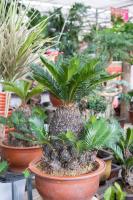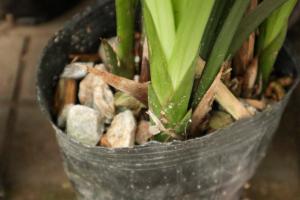How to Cover a Hole in a Plant Pot
Plant pots are an essential item in any garden or house, helping to add character and life to your space. However, if your plant pot has a hole, it can be challenging to plant certain types of plants or keep your soil from escaping from the bottom. Luckily, covering up a hole in a plant pot is relatively easy and can be done using a variety of different materials. In this article, we’ll take you through the steps involved in covering up those annoying holes and discovering the best ways to ensure your plants thrive.
Materials Needed:
Plant pot with a hole
Metal mesh/screen
Waterproof tape or sealant
Polystyrene foam peanuts
Scissors
Step 1: Clean the Plant Pot
The first thing you need to do when covering a hole in a plant pot is to clean it thoroughly. Remove any excess soil or debris from the pot and wipe it down with a damp cloth. This will make sure that the mesh or tape will stick properly to the pot and will ensure that it remains in place over time. It's crucial to have a clean surface when adding a new layer to the pot's bottom.
Step 2: Cut the Metal Mesh/Screen to Size
The next step in covering a hole in a plant pot is to cut a piece of metal mesh or screen to size. You can use a pair of scissors or wire cutters to do this, making sure that it fits tightly over the hole. The mesh should be wide enough to cover the hole without overlapping the sides of the pot. If it overlaps, it can interfere with the placement of the plant roots.
Step 3: Apply Waterproof Tape/Sealant
Once you have cut the metal mesh or screen to size, the next step is to apply a layer of waterproof tape or sealant around the edges. This will help to keep the mesh in place and prevent soil and water from escaping. Choose a tape or sealant that is designed for outdoor use and can withstand water and sunlight's exposure. Ensure that the sealant is applied correctly, to avoid soil leaking through the sides or getting trapped in the gap between the pot and mesh.
Step 4: Add Polystyrene Foam Peanuts
The final step in covering a hole in a plant pot is to add some polystyrene foam peanuts to the bottom of the pot. This helps to improve drainage and also helps to reduce the amount of soil you will need to fill up the pot. The peanuts are lightweight and will not add significant weight to the pot, but they help in retaining water for the roots. Place enough peanuts to fill up the base of the pot if needed.
Conclusion
Covering up a hole in a plant pot is a simple and easy process that can be completed in a few simple steps. Whether you're looking to plant a new houseplant or want to re-pot an existing one, the above steps will help to ensure that your plants thrive and grow to their fullest potential. Use the right materials, and keep your plants healthy and happy.

 how many times do yo...
how many times do yo... how many planted tre...
how many planted tre... how many pine trees ...
how many pine trees ... how many pecan trees...
how many pecan trees... how many plants comp...
how many plants comp... how many plants can ...
how many plants can ... how many plants and ...
how many plants and ... how many pepper plan...
how many pepper plan...

































